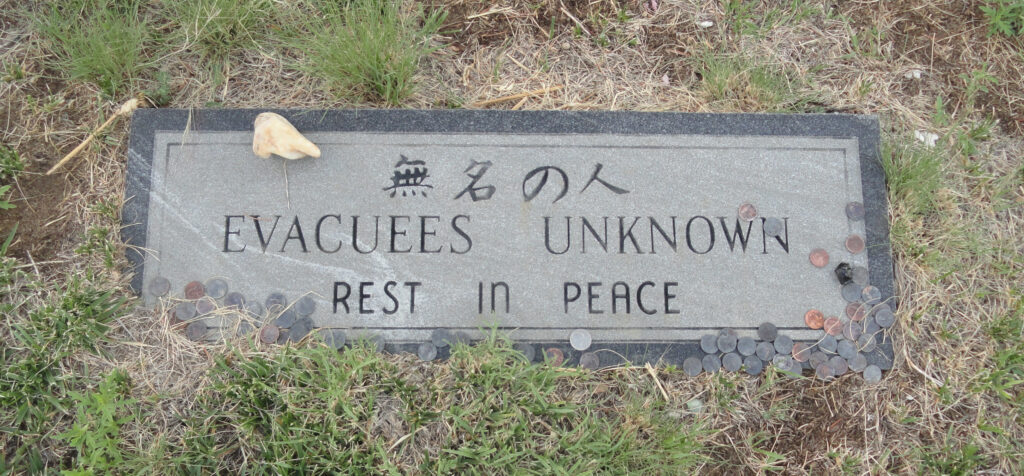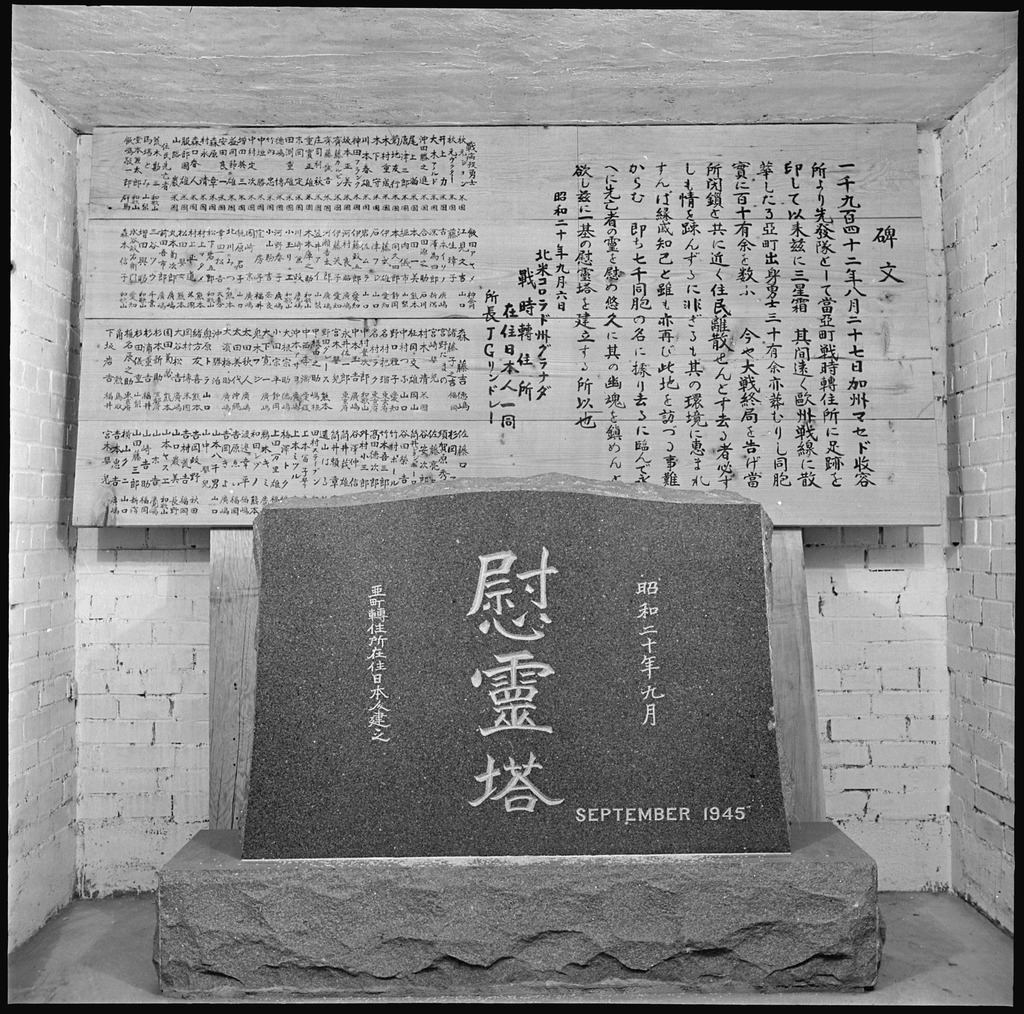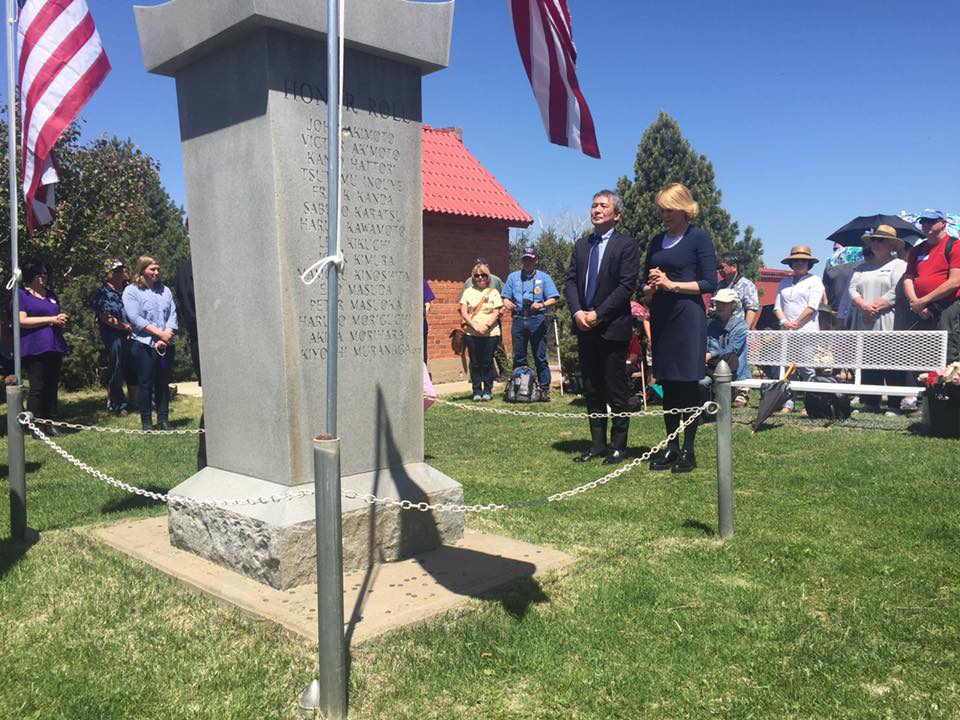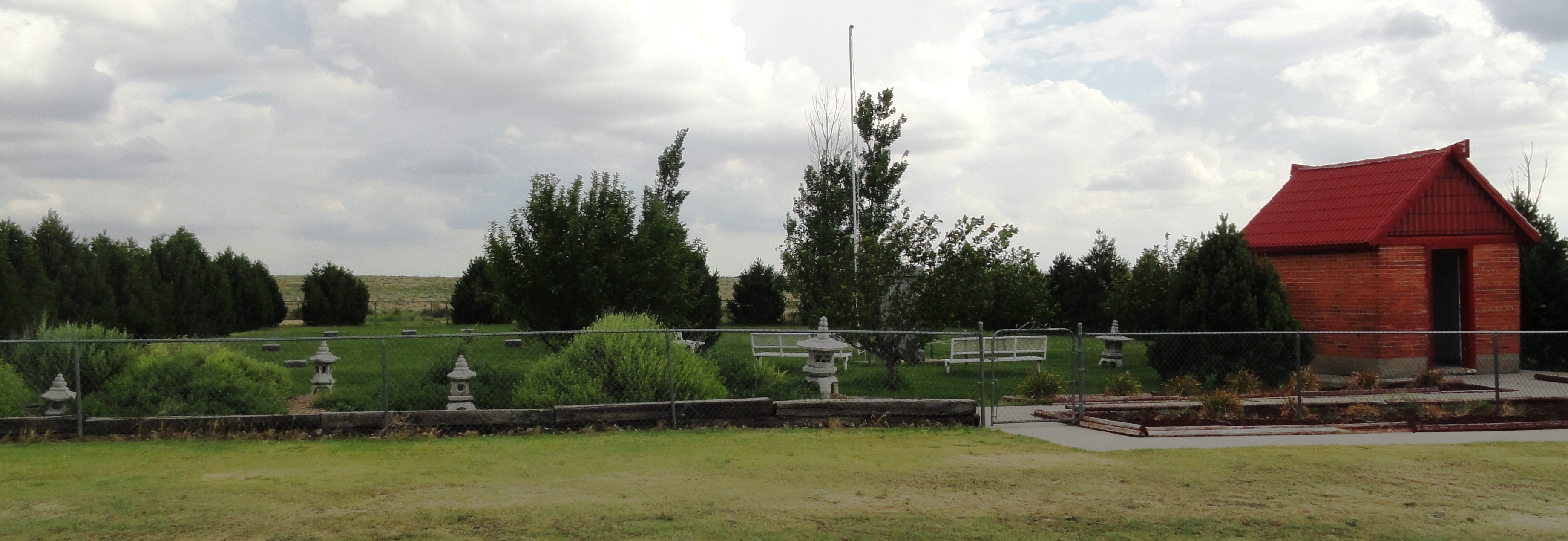
Memorialization at the Amache cemetery has changed significantly throughout the years.
In 1945, a granite memorial was dedicated by prisoners to commemorate those who died in camp. It was housed in a building made of bricks from Amache and also held a number of thick wooden slabs on which the names of all who died at Amache had been carefully written in Japanese characters.

At the first formal pilgrimage in 1975, barbed-wire still enclosed the cemetery, which was accessed through a cattle-guard that kept livestock from stepping on headstones while foraging in the scrub-covered landscape. Dates on the headstones revealed the deaths of mainly elderly or young babies, one surviving just a day. In the southern corner of the dusty cemetery, inscribed wooden markers identified other burial sites. The white painted door to the brick structure barely hung by its hinges, having been kicked-in by vandals.
In 1983, a second memorial inscribed with US military casualties from Amache was erected at the cemetery by the Denver Central Optimists Club. They designed a plan to update the cemetery and grounds and re-vitalize the brick structure.

Granada school children from grades K-12 completed most of the work, with assistance from Granada High School teacher John Hopper and his students with the Amache Preservation Society. Following the Denver Central Optimists Club’s plan, the cemetery was transformed by planting trees and grass and installing a drip-irrigation system to bring water to this part of the semi-arid countryside. Trees planted by prisoners at Amache and dependent on rainfall are dwarfed by the pine trees cared for by Granada students. A large area of green grass as well as seating greet current day pilgrims in the cemetery now enclosed by chain-link fencing. The wooden markers once standing in the southern corner of the cemetery have succumbed to the elements.
